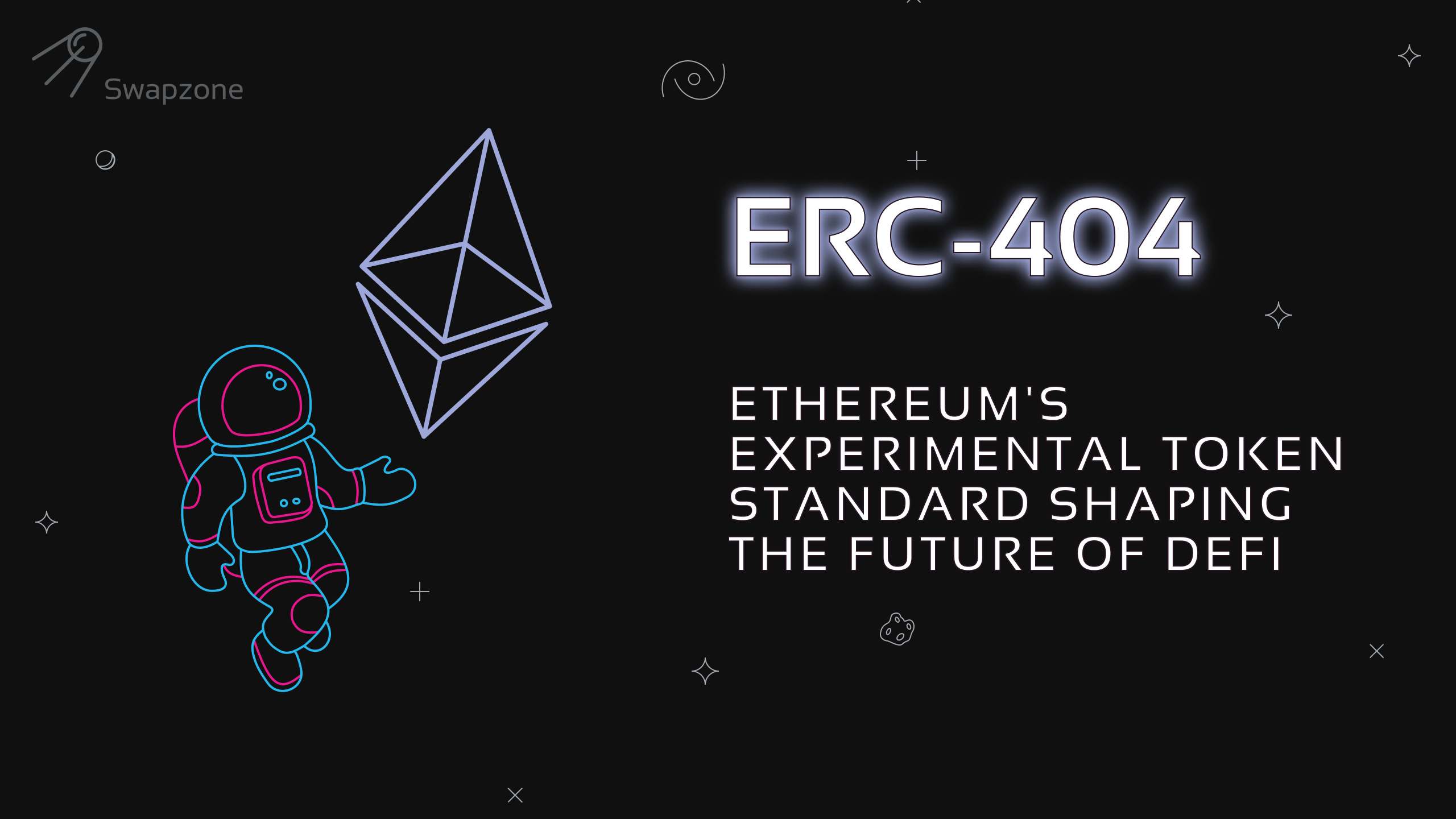In the ever-evolving landscape of blockchain technology, Ethereum stands as a pioneer, constantly pushing the boundaries of innovation. Recently, a new experimental token standard has emerged on the Ethereum network, captivating the attention of developers and enthusiasts alike. ERC-404, also known as the “Error 404 Token Standard,” aims to address limitations associated with existing token standards such as ERC-20 and ERC-721, while introducing novel features and functionalities designed to enable more versatile and efficient tokenization.
Origins and Overview
ERC-404 was introduced as an experimental framework by a group of forward-thinking developers. It seeks to enhance the functionalities of Ethereum tokens by addressing some of the limitations of traditional standards. While ERC-20 laid the foundation for fungible tokens and ERC-721 pioneered non-fungible tokens (NFTs), ERC-404 aims to combine the best elements of both standards.
Key Features and Functionalities
One of the standout implementations of ERC-404 is the Pandora token. As the first ERC404 token, Pandora represents an experimental mixed ERC20/ERC721 implementation with native liquidity and fractionalization for non-fungible tokens. This unique approach enables persistent liquidity and semi-fungibility for all assets within the Pandora collection.
For each Pandora token held, addresses receive one replicant from the corresponding NFT collection. This innovative mechanism not only ensures liquidity but also introduces semi-fungibility, allowing for more fluid token transfers and interactions within the Pandora ecosystem.
Challenges and Considerations
While Pandora and ERC-404 present exciting opportunities for innovation within the Ethereum ecosystem, they are not without challenges. As experimental standards, they may undergo revisions and iterations as developers gather feedback and identify areas for improvement. Additionally, the adoption of these standards may face resistance from established protocols, necessitating widespread community support and collaboration.
Security also remains a paramount concern, as any vulnerabilities or exploits in ERC-404 smart contracts, including Pandora, could have significant repercussions for token holders and the broader Ethereum ecosystem.
Comparison with Other Token Standards
ERC-20 VS ERC-721: While ERC-20 tokens are interchangeable and represent a standardized unit of value, ERC-721 tokens, or NFTs, are non-fungible and represent unique assets. However, with Pandora and ERC-404, developers have the flexibility to create tokens that exhibit both fungible and non-fungible properties, opening up exciting possibilities for decentralized finance (DeFi), gaming, digital art, and beyond. This hybrid approach offers a bridge between the two worlds, allowing for enhanced interoperability and innovation within the Ethereum network.
In contrast to traditional token standards like ERC-20 and ERC-721, Pandora and ERC-404 offer a unique blend of features and functionalities. While ERC-20 revolutionized the concept of fungible tokens and ERC-721 introduced the concept of NFTs, ERC-404 seeks to combine the best elements of both standards. Pandora, in particular, showcases the potential for native liquidity and fractionalization for NFTs, paving the way for new use cases and applications within the Ethereum ecosystem.
Future Outlook
The emergence of Pandora and ERC-404 represents a significant milestone in the evolution of token standards on the Ethereum blockchain. As developers continue to explore their capabilities and potential use cases, Pandora and ERC-404 have the potential to revolutionize the way tokens are created, managed, and utilized within the DeFi ecosystem. With ongoing research and development efforts, they could pave the way for a new era of decentralized finance, characterized by increased flexibility, security, and innovation.
Conclusion
In conclusion, Pandora and ERC-404 stand as testaments to Ethereum’s commitment to innovation and progress. While still in their early stages, they hold immense promise as catalysts for advancing the capabilities of tokenization on the Ethereum blockchain. As developers and enthusiasts embrace these experimental standards, the future of decentralized finance looks brighter than ever, fueled by the endless possibilities of Pandora and ERC-404.
If you’re interested in acquiring the Pandora token, Swapzone provides a convenient platform for accessing it. Swapzone offers users the ability to easily exchange various cryptocurrencies and tokens, including Pandora, through a seamless, user-friendly interface, and integrated 15 different instant exchanges. With its intuitive design and efficient swapping mechanism, Swapzone also provides the ability to compare those instant exchanges by 10+ different parameters, thus allowing users to choose the best option for their needs. Whether you’re a seasoned cryptocurrency enthusiast or a newcomer looking to explore new tokens, Swapzone serves as a reliable gateway to acquiring Pandora and other digital assets.
Frequently Asked Questions
ERC-404 is an experimental token standard introduced on the Ethereum network. It aims to enhance the functionalities of Ethereum tokens by addressing limitations of existing standards like ERC-20 and ERC-721.
While ERC-20 tokens are fungible and ERC-721 tokens (NFTs) are non-fungible, ERC-404, represented by the Pandora token, offers a unique blend of fungible and non-fungible properties. It allows for liquidity and fractionalization for NFTs, opening up new possibilities for decentralized finance, gaming, digital art, and more.
The Pandora token is the first implementation of the ERC-404 standard. It combines elements of ERC-20 and ERC-721, offering native liquidity and fractionalization for NFTs. Each Pandora token held represents ownership of a replicant from the corresponding NFT collection, introducing semi-fungibility within the Pandora ecosystem.
As experimental standards, ERC-404 and Pandora may undergo revisions and face resistance from established protocols. Security is also a concern, as vulnerabilities in smart contracts could impact token holders and the Ethereum ecosystem.
ERC-404, through innovations like the Pandora token, offers increased flexibility, security, and innovation within the DeFi ecosystem. It opens up new possibilities for tokenization and expands use cases within decentralized finance.
With ongoing research and development efforts, ERC-404 and Pandora have the potential to revolutionize tokenization on the Ethereum blockchain. They could pave the way for a new era of decentralized finance, characterized by enhanced capabilities and endless possibilities.
Swapzone is a platform that provides a convenient way to access the Pandora token. Through Swapzone, users can exchange various cryptocurrencies and tokens, including Pandora, with ease. The platform offers a user-friendly interface, integrated with 15 different instant exchanges, allowing users to compare and choose the best option for their needs.


